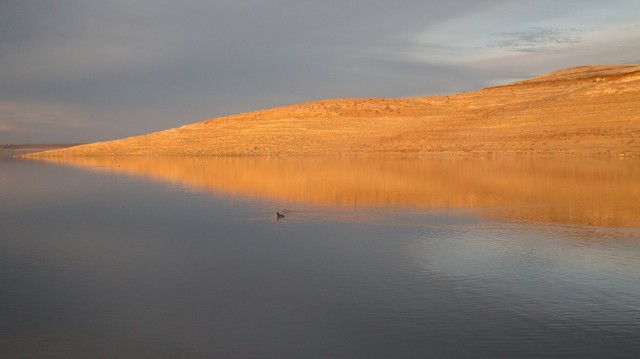
Bettina Boxall of the Los Angeles Times had a great piece over the weekend, "Drying up the Delta: 19th century policies underlie today's crises," which examines California's system of water rights and the huge advantage it has given to those who laid claim to water north of the Sacramento-San Joaquin Delta in the 1800s.
Boxall notes that the current struggle over water supplies has centered on diversions to farms and cities south of the Delta. But, she points out, the impact of the massive diversions in the Sacramento Valley, far north of the Delta, "has essentially been ignored":
Regulators don't even know the total quantity that irrigators and cities suck from the Sacramento and San Joaquin rivers and their tributaries. Diverters with the greatest seniority "just stick a pipe in the river and out it goes," said UC Berkeley geography professor emeritus Richard Walker, an expert on California agribusiness. "They've never been touched."
Boxall focuses on one of the oldest (most senior) Sacramento Valley water rights holders of all, the Glenn-Colusa Irrigation District, which has rights to pump enough water for about 4.4 million households. Here's how Boxall describes how the district got its start:
Glenn-Colusa's five-story pump station stands on an oxbow bend of the Sacramento River some 80 miles north of the capital, not far from where on Dec. 18, 1883, Will S. Green nailed a notice to an oak tree on the west bank.
The posting announced that he was diverting 500,000 miner's inches of the river's flow, the equivalent of several million gallons a minute. Green made his claim under a water rights system that developed with settlement of the West and remains a central principle of state law.
Known as "first in time, first in right," it was established in California by the Forty-Niners — who used prodigious amounts of water to blast gold out of the Sierra foothills — and essentially says that whoever is the first to divert a set quantity of water from a source has priority rights to it.
As Boxall reports, state and federal officials have been loath to interfere with those rights, regardless of the fact there's no longer enough water to satisfy everyone who has staked a claim to a supply and despite the fact the policy has brought on an environmental disaster in the Delta.
